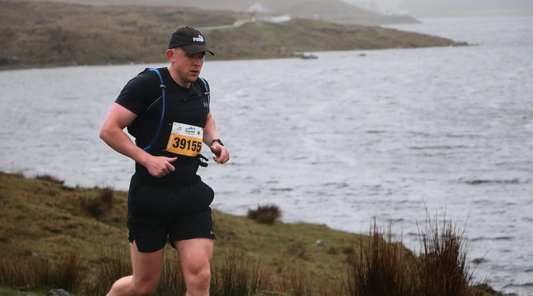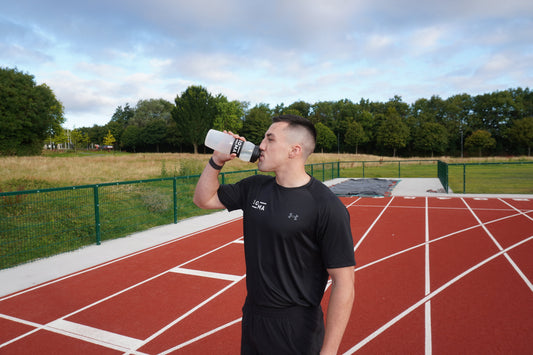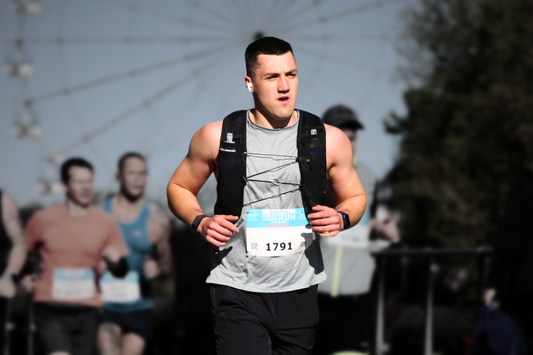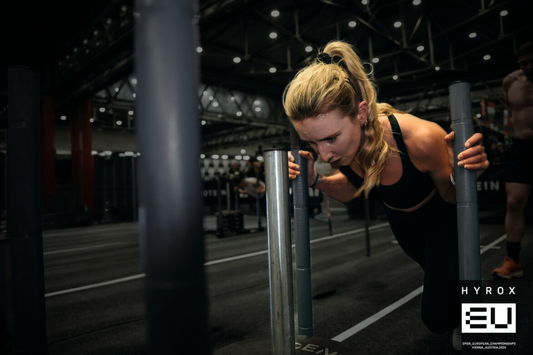On 27th April 2025, John, co-founder of SOMA Hydration, took on the Connemarathon Ultra - a 63km route through Connemara’s notoriously remote landscape.
It was wet. It was windy. And it was a serious test.
In this post, we break down John's exact fuelling and hydration strategy, what worked well, what he’d adjust next time, and what others can learn from the experience.
Preparation and Testing
Everything John used on race day, from the fuel sources to the sodium dosage to the pacing structure, had been tested and refined during long training runs. In the weeks leading up to the ultra, he experimented with timing, carb types, fluid intake, and electrolyte dosages to build a strategy he knew he could rely on.
John has also learned through trial and error that he likely performs best with a slightly higher sodium intake than most runners - something that shaped his strategy going into this race.

Race Snapshot
- Event: Connemarathon Ultra
- Date: 27 April 2025
- Distance: 63km
- Time: ~7 hours 40 minutes
- Elevation Gain: ~560m
- Conditions: Extremely wet and windy
- Goal: Finish strong
Pre-Race Nutrition & Hydration
John followed a very high-carb approach in the two days leading up to the race, aiming for around 800g of carbohydrates per day. He didn’t attempt anything new - just large, frequent, carb-dense meals to fully top off glycogen stores.
Race Morning Nutrition
- 5:00–6:00am: Bagel with rashers, pineapple juice, coffee
- 6:00–7:00am: Bagel with chocolate
- 7:00–8:00am: Squares bar + 1 SOMA sachet in water
Race-Day Fuel & Hydration Strategy
John followed a structured plan aimed at 80–90g carbs per hour and over 900mg sodium per hour, using SOMA for electrolytes and maltodextrin and real food for carbs. Having bonked during training when fuelling was inconsistent, he knew discipline around this would be key.
Carbohydrates
- Total: ~610g over 7.5 hours
- Average: ~81g/hour
- Sources: Jelly sweets, squares bars, maltodextrin in water, 2 sandwiches
- Approach: Structured and scheduled - carbs every 30 minutes (alongside sipping on maltodextrin)
Sodium & Fluids
- Sodium Total: ~7g (~933mg/hour)
- Electrolyte Source: SOMA Hydration sachets mixed in water bladders
- Fluids Total: ~6.4 litres of water (from 3 bladders and aid stations)

Race-Day Intake Breakdown
| Time | Fuel/Carbs | Sodium Source | Water (ml) | Carbs | Sodium |
|---|---|---|---|---|---|
| 0:00–1:00 | Maltodextrin + Sweets | Bladder 1 (SOMA) | ~1000ml | 60g | 800mg |
| 1:00–2:00 | Sweets + Squares bar | Bladder 1 (SOMA) | ~1000ml | 130g | 800mg |
| 2:00–3:00 | Sweets + Sandwich | Bladder 2 (SOMA) | ~1000ml | 145g | 1,900mg |
| 3:00–4:00 | Squares bar + Sweets | Bladder 2 (SOMA) | ~1000ml | 120g | 800mg |
| 4:00–5:00 | Sweets + Sandwich | Bladder 3 (SOMA) | ~1000ml | 60g | 800mg |
| 5:00–6:00 | Squares bar + Sweets | Bladder 3 (SOMA) | ~1000ml | 75g | 1,700mg |
| 6:00-7:00 | Squares Bar | Bladder 3 (SOMA) | ~400ml | 30g | 200mg |
| Total | ~6.4L | ~610g | 7g |
What Worked Well
- He followed the plan precisely: In contrast to some training runs where fuelling felt forced, John stayed consistent from start to finish.
- No bonking: Previous under-fuelled sessions taught him the importance of precise fuelling.
- Cramp-free, gut intact: No digestive issues and zero muscle cramps, thanks in part to proper sodium intake.
- Mental boost in final 10km: Despite a dip at 42km, he regained momentum as the finish drew closer.
-
Bladder system worked: Carrying his own fluids allowed for total independence from aid stations.
What Didn’t Go to Plan
- Mental low point at 42km: Not a physical wall, but the psychological challenge of facing another 20km, including tough climbs and without crowd support, took its toll.
- Otherwise smooth sailing: Hydration, fuelling, gear, and pacing all performed as expected.
What He’d Do Differently
- Add mid-race caffeine: John consumed around 400mg caffeine before the race but none during. In hindsight, a well-timed caffeine dose around 42km might have helped with mental clarity and drive during the dip.
Why He Used SOMA
Every bladder John used during the Connemarathon Ultra was mixed with SOMA Hydration - providing 800mg of sodium per sachet. The result was no cramps, no stomach issues, and consistent energy.

Final Thoughts
Ultra-running demands a smart fuelling strategy, consistent hydration, and trust in your preparation.
Everyone’s physiology is different, but if there’s one thing John has learned, it’s that higher sodium works for him, especially in long, wet, and demanding races like this. The key is figuring out what you need, testing it in training, and trusting it on race day.
For John, sticking to a high-carb, high-sodium plan kept his energy steady, his stomach settled, and his mind (mostly) in the game. Don’t guess. Test. And don’t leave your fuelling to chance.
Enjoyed this post? Get hydration strategies, athlete insights, and exclusive SOMA offers straight to your inbox.





